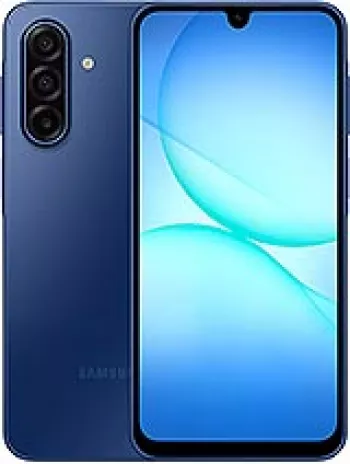
Introduction to Samsung X600
The Samsung X600 is a fascinating piece of mobile phone history, representing a time when feature phones reigned supreme in the early 2000s. Released in Q3 of 2003, the Samsung X600 captivated users with its blend of style, technology, and simplicity. Despite being discontinued, the device still holds a special place in the hearts of tech enthusiasts and those who appreciate the evolution of mobile technology. This comprehensive analysis delves into the specifications, features, and historical significance of the Samsung X600.
Design and Build
The Samsung X600 sports a compact and lightweight design, ideal for the era it was released in. With dimensions of 102 x 43 x 20 mm and a weight of just 80 grams, the X600 was portable and easy to handle. The device was available in two classic colors: Blue and Silver, appealing to a broad range of users who favored sleek and minimalist designs. Built for the standard Mini-SIM, the phone echoed the design sensibilities of the early 2000s.
Display
Featuring a UFB (Ultra Fine & Bright) display capable of showing 65K colors, the Samsung X600's screen was on par with other high-end feature phones of the time. The display boasted a resolution of 128 x 128 pixels distributed across four text lines, ensuring clear readability for messaging and basic navigation through the phone's menus.
Network and Connectivity
The Samsung X600 operated on GSM technology, supporting 2G bands at GSM 900 / 1800 frequencies. Although limited by today's standards, the phone was a robust choice for users who needed reliable mobile connectivity for voice calls and basic data services via GPRS Class 10. Notably, the X600 lacked modern connectivity options such as Bluetooth and Wi-Fi but included an infrared port for data transfer, a common feature at the time.
Camera
The Samsung X600 came equipped with a VGA main camera, a noteworthy addition for a phone from 2003. With a 0.3 MP sensor, the camera catered to casual photography needs, offering users the convenience of capturing moments on the go, albeit without video recording capabilities.
Sound and Alerts
Though it lacked a loudspeaker and a 3.5mm audio jack, the Samsung X600 compensated with a selection of downloadable polyphonic ringtones and a vibration alert type. The absence of modern-day audio capabilities highlights the X600’s primary focus on communication rather than entertainment.
Messaging and Browser
The Samsung X600 provided support for SMS, EMS, and MMS messaging, allowing for simple text communication and picture messages, a key feature at the time. With a WAP 2.0/xHTML browser, users could access the basic mobile internet, marking the gradual shift towards more internet-capable mobile devices.
Games and Entertainment
For entertainment, the Samsung X600 offered four engaging games: Honey Ball, Go! Hamster, Bowling, and additional Java-based games available for download. This blend of onboard entertainment showcased Samsung's effort to provide users with more than just a communication device.
Battery Performance
The Samsung X600 was powered by a removable Li-Ion 900 mAh battery, providing up to 360 hours of standby time and about 5 hours and 30 minutes of talk time. Such battery longevity was a critical factor in the phone’s practical usability, fulfilling the needs of users who required a reliable mobile device throughout the day.
Memory and Storage
While the Samsung X600 did not support external memory card slots, it featured a generous phonebook capable of storing 1000 contacts with up to six fields per contact. Additionally, call record functionalities permitted storage of 20 dialed, received, and missed calls each, underpinning the phone's role as a communication-centric device.
Historical Significance
The Samsung X600 epitomizes an era where mobile technology was rapidly advancing but remained focused on core functionalities like connectivity and communication. As an early 2000s feature phone, it represents the transition from bulky cell phones to more compact, feature-rich devices, paving the way for the smartphones that dominate today’s market.
Conclusion
In retrospect, the Samsung X600 is more than just a relic from the past; it serves as an important milestone in mobile phone evolution. Despite being discontinued, its legacy endures among those who appreciate the simplicity and innovation of early mobile technology, setting foundational steps towards the extensive capabilities we enjoy in today's smartphones.
Key Features of Samsung X600
- Compact and lightweight design with dimensions of 102 x 43 x 20 mm and a weight of just 80 g.
- Supports GSM 900/1800 networks with GPRS Class 10.
- Display features UFB with 65K colors and a resolution of 128 x 128 pixels.
- Infrared port available for connectivity.
- Messaging options include SMS, EMS, and MMS.
- Pre-installed games: Honey Ball, Go! Hamster, and Bowling, with Java support.
- Removable Li-Ion 900 mAh battery provides up to 360 hours of standby and up to 5 hours 30 minutes of talk time.
- Available in two colors: Blue and Silver.
Samsung X600 Cons
- No EDGE support for fast internet connectivity.
- Discontinued, meaning no official support or updates.
- No external memory card slot for additional storage.
- VGA camera quality only, with no video capabilities.
- No selfie camera available.
- Lacks a loudspeaker.
- No 3.5mm audio jack for headphones.
- No WLAN or Bluetooth connectivity for wireless data transfer.
- No GPS functionality for location-based services.
- No FM radio for on-the-go music.

View Also
More Phones
All Rights Reserved +14266 Phones © Mobilawy 2025

























